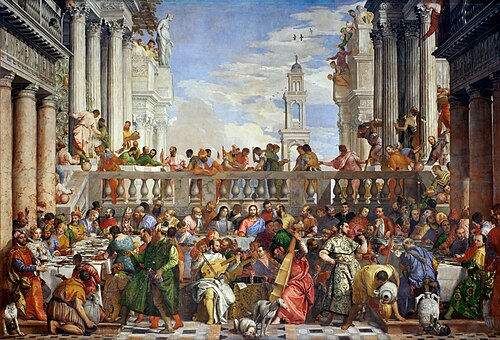In many types of digital humanities-research, we have to approach and relate to representations, simulations and copies. It can be a digital visualization of an archaeological site, a 3D-scanned object or a digitized document. The phenomenon of copies and representations is not new (for example, plaster casts of sculptures and objects have a long history). On the other side, the growing use of employing digital tools in the humanities for making representations actualizes issues of authenticity and ideas of “the original” as something with an intrinsic value.
Yesterday, I attended a lecture by Jonathan Westin, Deputy Director of the Centre for Digital Cultural Heritage Studies in Gothenburg. It was arranged by Uppsala DH network. He talked about the authentic copy and how copies, despite what most of us imagine, can be experienced as more authentic than the original. As an example, Westin told us about a reproduction of Veronese’s famous painting “The Wedding at Cana”. This immense painting was taken from its original location in the Church of San Giorgio Maggiore, Venice in 1797 as war bounty by Napoleon. The Louvre Museum, Paris now has the original.

The Wedding at Cana by Paolo Veronese, 1563
In a very complicated and scrupulous process, a copy was made and installed in the location of the original painting; restoring the artwork in its original setting. Criticized by some as an action that violated the almost sacred status of the original, others were ecstatic and witnessed about having a more authentic experience of standing in front of the re-contextualized copy than they had when viewing the original in a traditional museum surrounding.
This story inspired me to rethink and also question the importance of originals. In some cases, we actually can learn a lot more from the copy, as it allows us to handle it, to touch it, to experience it in ways that the original was intended to be experienced. In Westin’s words: Copies have more fun than originals!
Read the whole New York Times-story of the reproduced “The Wedding at Cana” here.
Digital Humanities Uppsala is going to upload Westin’s lecture in its entirety so keep track of their webpage if you want to know more.
